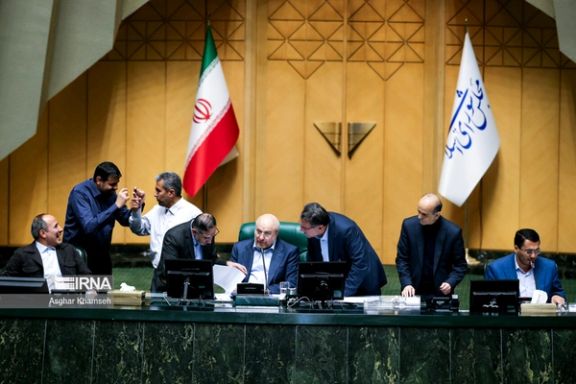Trump's Possible Return Shakes Iran Currency Market

The results of Iran’s recent elections along with growing concerns about Donald Trump’s possible return to the US presidency have led to an alarming fall in the value of the Iranian rial.

The results of Iran’s recent elections along with growing concerns about Donald Trump’s possible return to the US presidency have led to an alarming fall in the value of the Iranian rial.
Since early January the rial has fallen by almost 20 percent, adding to its steep devaluation since 2018, when Donald Trump withdrew from the Obama-era JCPOA nuclear deal and imposed crippling sanctions on Iran.
Concern has spiked following the announcement of yet more hardliners coming into power in Iran's parliament in the wake of the recent low-turnout kangaroo elections.
Meanwhile, Trump’s successive victories in the Republican primaries and his eventual candidacy for the upcoming elections also significantly shook Iran’s currency market, the US dollar surging to 600,000 rials last week, hitting an all-time record.
Referring to the composition of lawmakers in Iran’s next parliament, economic journalist Reza Gheibi told Iran International that Iranians have concluded there is no hope of improving domestic economic conditions and thus resorted to different markets, including that of currency, to avoid the rapid depreciation of their cash.

Also, Stockholm-based economist Ahmad Alavi told Iran International that Iran’s economy is severely impacted by widespread corruption, international sanctions, banking isolation, nepotism and squandering foreign currency resources.
“The future parliament lacks the required competency and eligibility to legislate in the field of economy and this will certainly lead to wasting more currency resources,” he said.
Over the past decades, the regime has provided huge financial and military support to its proxies in the region such as Yemen's Houthis and Lebanese Hezbollah while Iranians increasingly face poverty and a bleak economic future.
According to Gheibi, the prospect of Trump’s re-election as the US President has fueled concerns about the possibility of increased sanctions against Iran, more restrictions on the flow of foreign currency into the country, and a decline in oil sales.
Since early 2018 when Trump withdrew from the JCPOA nuclear deal, the rial has fallen 15-fold as the United States employed “the maximum pressure” policy and imposed economic sanctions against Tehran.
A review of recent years’ statistics indicates that the currency market often fluctuates in the final weeks of the Iranian year as the demand for currency in the import sector increases.
Moreover, the small sector of Iranian society who can afford to travel abroad during the New Year (Nowruz) holidays, also increases the demand for currency.
However, the psychological pressure of Trump’s prospective victory has accelerated the upward trend in the currency rate in the final days of the current year.
Alavi said there are many factors needed to create stability in the economy including a more effective government and repairing the budget deficit.
Over recent days, the Iranian government has tried to prevent the currency rate increase by means of injecting dollars to the market and tightening security measures.
However, the impact of such measures are expected to be limited and temporary, and the government needs to consider a major policy overhaul to control the dollar rate in the next Iranian year (starting March 20).
According to estimates, the dollar will be exchanged at a rate of 590,000 to 600,000 rials in the next few days. However, the coming year is predicted to be much tougher for Iran.
Analysts believe that the oil market will suffer. The decline in China’s economic growth as the largest oil buyer means that Iran’s oil revenues in turn, will not increase, Tehran selling 90 percent of its oil to Beijing.
As protests and unrest show no sign of abating, Iran faces another tough year ahead.